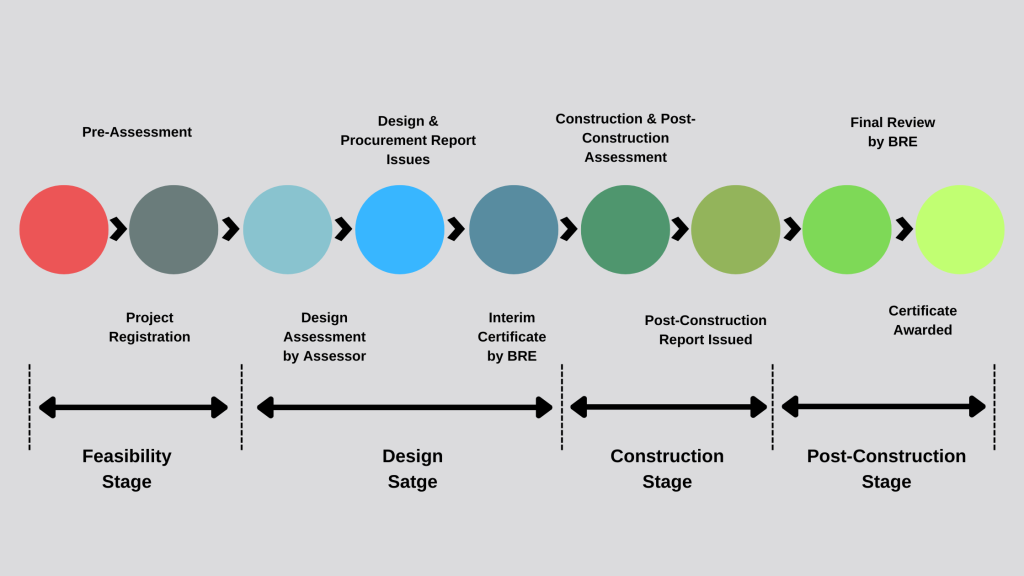BREEAM stands for ‘Building Research Establishment Environmental Assessment Methodology’ and is the methodology which sets the world standard for rating systems of building and works as an environmental assessment method. Acoustic testing companies (such as JosTec), work in cooperation with companies that provide BREEAM Assessments, to ensure that you can be safe in the knowledge that your building meets one of the comprehensive regulation and measures on a building’s environmental performance. JosTec offers key services that contribute to achieving BREEAM standards, such as Sound Insulation Testing, Noise Assessments, and Ventilation Testing and Commissioning.
However, important for both those testing as well as those requiring the tests are a number of factors to be understood. This includes understanding what BREEAM actually is and means in practice; its implications on building compliance needs and why it is so important for so many buildings and developments.
What is BREEAM?
BREEAM is a leading methodology that ensures buildings are compliant when it comes to sustainable construction, operation, design and are fit to be used to assess both refurbishment schemes and new developments.
It was first launched in 1990 by the Building Research Establishment (BRE) as a way of assessing new offices, but now it has developed into something much more widespread. Its inherent focus today upon sustainability design has helped to create a much greener built environment across the UK and the rest of Europe, with schemes implemented in Norway, Sweden, Spain and the Netherlands:
- The BREEAM assessment method has been applied in over 70 countries around the world
- The most recent statistics from 2016 show that there are over 550,000 developments certified by BREEAM
- Over 2,250,700 buildings have been registered for a BREEAM assessment
- At least half of all local planning authorities in England have the BREEAM assessment method as part of their development network
- This rises to over 70% of authorities in London
How does BREEAM work?
Seen as the benchmark standard when it comes to sustainable development as well as increasing environmental awareness around the world, BREEAM assessments take into account a number of different aspects in order to determine eligibility for certification. BREEAM assesses sustainability against a range of targets and then rewards performance if it delivers social, economic or environmental benefits.

What are the Criteria?
The following categories and criteria BREEAM assessors take into account include the following:
- Ecology
- Pollution
- Waste
- Energy
- Management
- Water consumption
- Health and Wellbeing
- Efficiency
- Materials
- Transport
Based upon the aforementioned criteria, BREEAM assessors will award ‘credits’ or points of a building on each of the following categories, which is them multiplied by an environmental weighting factor. The overall score is determined by adding the individual category scores together and then a building is given a BREEAM rating.
There are two BREEAM assessment and certification stages that are implemented:
- An assessment during the design stage (in which an interim certificate is given)
- An assessment during the post-construction stage. This latter stage is the point in which a final certificate and subsequent rating is given.
The BREEAM Rating Scale
The BREEAM Rating Scale is an important part of a BREEAM rating and works as follows:
- Unclassified (a score of less than 30%)
- Pass (a score of more than 30%) This equates to around 75% of UK new non-domestic buildings
- Very good (a score of more than 55%) Around 25% of UK new commercial buildings in the UK
- Excellent (a score higher than 70%) Top 10% of new commercial buildings in the UK
- Outstanding (the highest score: a rating higher than 85%) this is usually equivalent to less than 1% of all new commercial buildings in the UK

JosTec’s Noise Assessments and Energy Saving & Reducing Carbon Emissions services ensure that your project is positioned for a high BREEAM rating by enhancing the environmental aspects of the development.
Why is BREEAM important?
BREEAM is becoming increasingly important for a number of reasons, with up to 70% of local authorities in cities across the UK requiring a BREEAM certification, affecting building work and developments carried out. This means that not adhering to BREEAM standards, may prevent developers and property owners from carrying out building works if not compliant:
- As part of the government’s Construction Strategy, it is now a requirement for all public projects to undergo an environmental assessment; achieving an Excellent BREEAM rating
- The demand for sustainable buildings is increasing year-on-year. Making sure that a building or development has a high BREEAM rating therefore can make a commercial property more covetable and of higher value
- BREEAM can help lead to quicker sales due to a desirability to purchase properties meeting BREEAM standards
- It can help lead to lower refurbishment costs for landlords due to part of a BREEAM assessment including factors such as efficient heating systems, low water consuming components, and energy efficient lighting, all of which are taken into consideration, reducing property running costs
- BREEAM ratings can have an economic impact for developers, with regards to any building’s failure to reach required BREEAM targets stipulated by a local planning authority. This could mean that the developer or contract may be in breach of a contract (which could lead to an expensive legal case)
- It provides social benefits. Over 71% of people surveyed by the UK Green Building Council who had used BREEAM assessments as part of their building development reported that it had been socially beneficial to their project. One of the most popular reasons why was the improved image as a result of having BREEAM certification for both the company and the building
BREEAM is also important due to the impact its measures have had on the environment over time. It has helped to place greater focus upon having development strategies centred around minimising construction waste, finding ways to reduce CO2 emissions and improving the environment for wildlife in the surrounding area.
This is partly down to part of a BREEAM assessment requiring contractors to develop a Resource Management Plan; with BREEAM assessors regularly monitoring on site developments to ensure they are meeting waste and efficiency targets.


